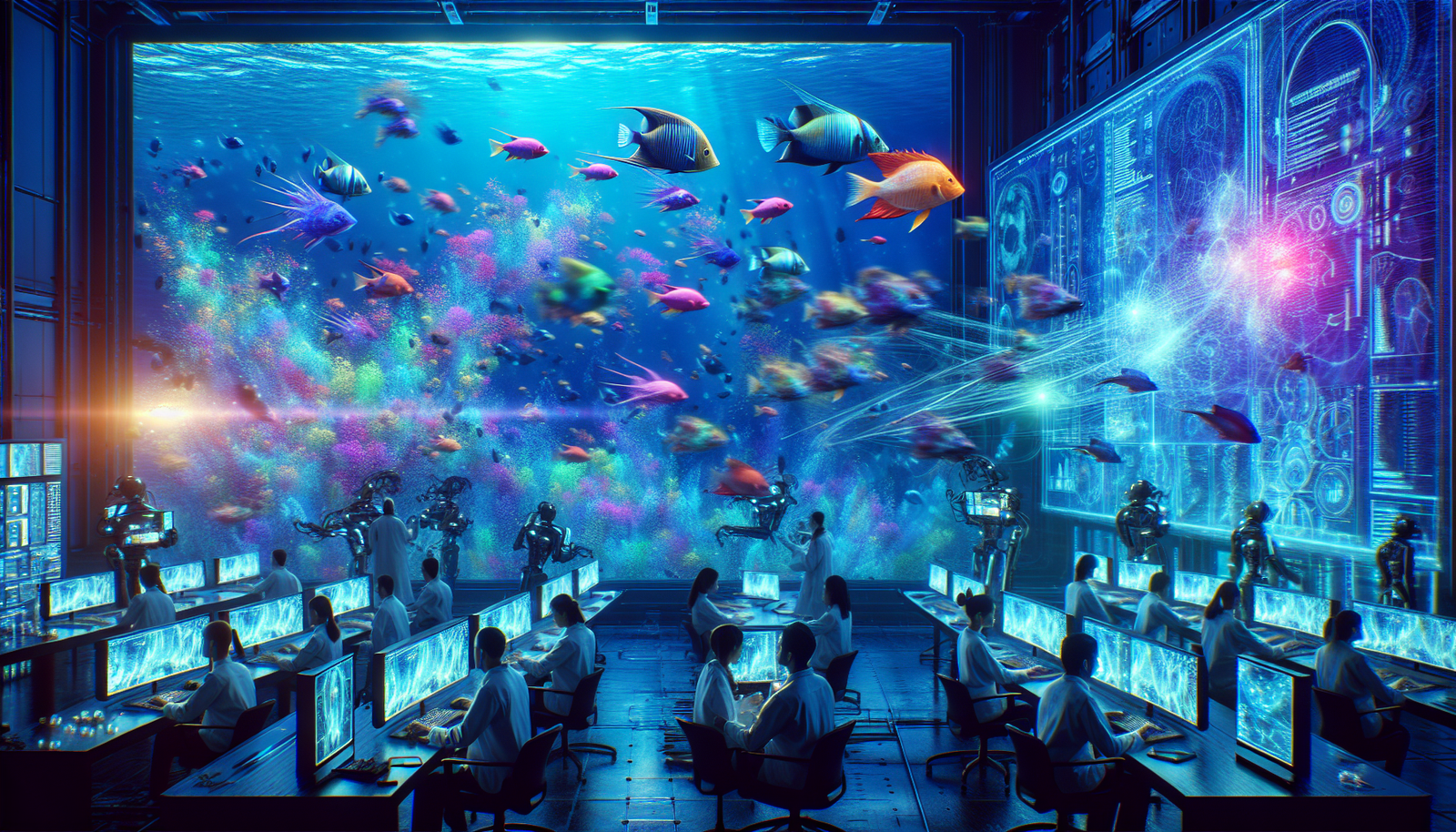Virtual reality is revolutionizing fish observation methods, revealing fascinating grouping behaviors. Scientists from Konstanz have shed light on the subtleties of uncoordinated fish behavior through an immersive environment. In doing so, they provide robots with the opportunity to acquire effective movement strategies.
A synergy between biology and robotics is emerging, unveiling the extent of _nature as a source of innovation_. This optimistic development paves the way for various applications in creating autonomous systems. The challenge of synchronized movements in the natural environment now inspires simple and elegant robotic solutions.
Exploitation of Virtual Reality to Study Fish
A research group based at the University of Konstanz has developed an innovative method using virtual reality to observe fish behavior, particularly that of zebrafish. Scientists designed virtual arenas where each fish could interact freely with virtual counterparts, represented by holographic projections of other fish. This setup allowed for unparalleled access to behavioral data without disrupting the natural state of the animals.
Selective Understanding of Social Interactions
Researchers were able to manipulate visual stimuli with optimal precision, isolating the factors that influence grouping behaviors. The zebrafish’s ability to maintain formation and avoid collisions revealed surprising laws of coordination. The main discovery rests on the idea that fish primarily rely on the perceived position of their neighbors rather than their speed, which regulates their following behavior.
Validation Tests in a Controlled Environment
To evaluate the validity of their results, scientists conducted an aquatic Turing test. A real fish swam alongside a virtual fish, oscillating between algorithmic control and natural behavior. Observations demonstrated that fish could not distinguish the real from the artificial, highlighting the effectiveness of the developed coordination model.
Robotic Applications and Implications
The coordination principles observed in fish have been integrated into swarms of robotic cars, drones, and boats. The goal was to evaluate the effectiveness of the zebrafish algorithm in comparison with state-of-the-art methods, such as the Model Predictive Controller (MPC). Results showed that the nature-based algorithm provided performance almost equivalent to that of MPC in terms of accuracy and energy consumption, while being significantly less complex.
Interface Between Biology and Robotics
This effort highlights the close ties between biology and robotics. The observed biological mechanisms provide inspiring models for the development of innovative control strategies in robotic systems. A future where nature increasingly inspires technology appears promising, with diverse implications for the design of autonomous vehicles and other emerging technologies.
References and Further Discoveries
For recent discoveries regarding artificial intelligence and its applications in various industries, articles such as the one related to innovative methods of AI and artificial intelligences acting as television presenters offer a fascinating perspective. Other studies, like those exploring the disruptive potential of AI, continually enrich the debate on technological integration.
Finally, recent initiatives, such as the new team for AI and mixed reality innovation, illustrate the momentum toward hybrid applications of these technologies.
Frequently Asked Questions
How do scientists use virtual reality to study fish behavior?
Scientists place zebrafish in virtual reality environments where they can interact with other virtual fish. This allows them to observe how the fish respond to different stimuli and collaborate while moving in groups.
What are the main discoveries regarding fish behavior in a virtual environment?
Research has revealed that fish use simple coordination rules based on the position of their neighbors to maintain their formation in a group, thereby avoiding collisions and quickly adapting to their environment.
How can the results of these studies be applied to robotics?
Algorithms discovered from fish behavior can be integrated into robotic systems, such as swarms of cars, drones, and boats, enabling effective following behavior through biologically-inspired methods.
What is the importance of coordination among fish in a school?
This coordination is essential for their survival, as it allows them to protect themselves from predators, optimize their foraging, and improve their energy efficiency during movements.
Can fish distinguish between a real fish and a virtual fish?
Studies have shown that fish cannot distinguish between a real fish and a virtual fish controlled by the algorithm, indicating that they react in the same way in both cases.
What precautions should be taken when using virtual reality for fish research?
It is crucial to ensure that virtual environments are true to their natural habitats to avoid disrupting their instinctive behavior, which could skew research results.
What is the contribution of this research to understanding collective behaviors?
This research demonstrates that collective behaviors observed in nature can offer effective and simple solutions for complex systems, thereby inspiring new strategies in robotics and autonomous technology.






